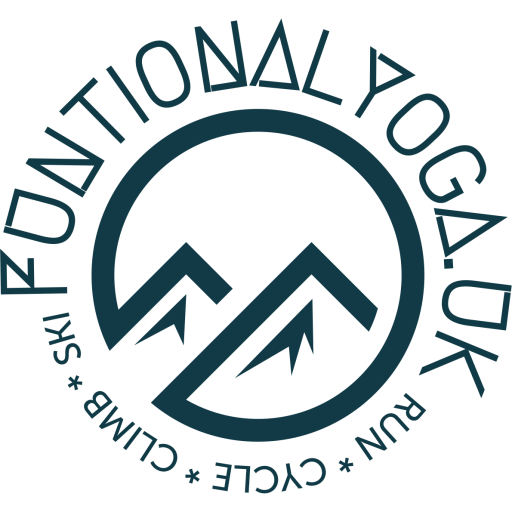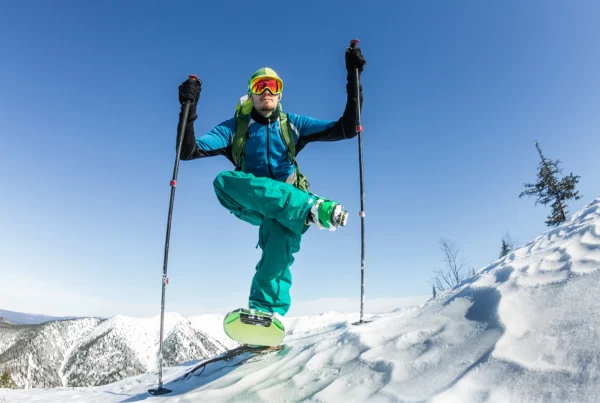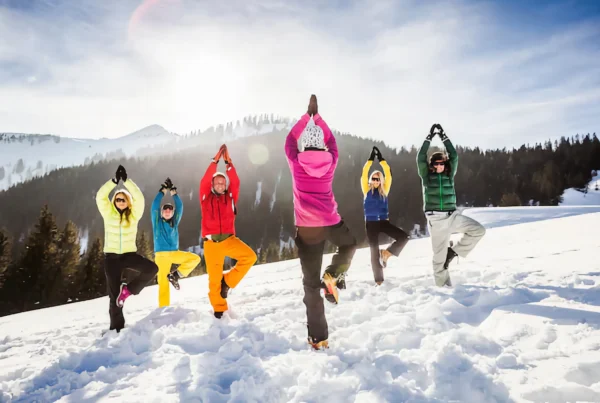
Introduction to Balance in Skiing and Snowboarding
Balance is a fundamental requirement for both skiing and snowboarding, directly influencing performance, stability, and the overall enjoyment experienced on the slopes. When skiing or snowboarding, achieving a stable position is crucial, as it allows for better control over movements and responses to varying terrain. A skier or snowboarder with a strong sense of balance can navigate challenging conditions, execute sharp turns, and maintain a smooth descent, all of which contribute to an enhanced experience on the mountain.
The ability to maintain equilibrium is not merely a physical challenge; it also encompasses mental aspects that greatly influence one’s ability to perform. Skiers who struggle with balance may find themselves constantly battling fatigue and frustration, ultimately leading to a diminished sense of enjoyment. Conversely, those who can effectively manage their balance are likely to engage more fully with the ski environment, allowing them to immerse themselves in the thrill and beauty of the mountains.
Integrating yoga into one’s routine is an effective strategy for improving balance skills pertinent to skiing and snowboarding. Yoga promotes body awareness, flexibility, and strength, attributes that are essential in maintaining stability while navigating intricate slopes. Through a variety of standing poses and balance-focused sequences, practitioners can develop the core strength and mental focus necessary for successful skiing and snowboarding. This harmonious relationship between yoga and winter sports offers skiers and snowboarders a unique approach to enhancing their balance, ultimately leading to more fulfilling and enjoyable experiences on the slopes.
Understanding the Role of Yoga in Enhancing Balance
Yoga is an ancient practice that offers a myriad of benefits, particularly in enhancing balance and stability, which are essential for skiing and snowboarding. At its core, yoga involves a series of postures, or asanas, that require careful coordination of body movement and breath. Through the practice of various poses, skiers and snowboarders can develop greater proprioception, allowing them to be more aware of their body’s position in space, which is crucial for maintaining balance on the slopes.
One way yoga enhances balance is by strengthening the core muscles. Poses such as the Tree Pose and Warrior III focus on stabilizing the trunk while balancing on one leg. This increased core strength translates directly to improved control when skiing or snowboarding, especially during sharp turns or when navigating uneven terrain. Additionally, yoga promotes flexibility, which allows for a greater range of motion in the joints. Poses like Downward Dog and Forward Bend can loosen tight muscles, reducing the risk of injury and improving overall performance in skiing.
Beyond the physical benefits, yoga also offers psychological advantages. The practice incorporates breathing techniques that help reduce stress and anxiety, fostering a calm state of mind. This mental clarity can significantly impact performance in snow sports, where maintaining composure in challenging conditions is vital. Furthermore, the focus on mindfulness in yoga encourages practitioners to stay present and attentive to their body movements, enhancing their ability to react swiftly and maintain balance during skiing maneuvers.
In conclusion, integrating yoga into a skier’s or snowboarder’s training regimen can lead to noteworthy improvements in balance. By developing both physical strength and mental focus through yoga, athletes can enhance their ability to navigate the slopes seamlessly, ultimately elevating their overall experience in these exhilarating winter sports.
Key Yoga Poses for Balance
For skiers and snowboarders, maintaining balance is essential for performance and injury prevention. Practicing yoga can significantly enhance stability, strength, and mindfulness on the slopes. Here are several key yoga poses that specifically target balance, ideal for winter sports enthusiasts.
Tree Pose (Vrksasana): Begin by standing tall with your feet hip-width apart. Shift your weight onto one leg, and place the sole of the opposite foot against the inner thigh or calf of the standing leg. Avoid placing it on the knee. Bring your palms together in front of your heart or raise them overhead. Focus your gaze at a fixed point to help maintain your balance. Hold for 30 seconds, then switch sides.
Warrior III (Virabhadrasana III): Start in a standing position. Shift your weight onto your right foot and lift your left leg behind you, keeping it straight. Lean your torso forward so that your body forms a straight line from head to toes, with your arms extended forward or at your sides. Engage your core and hold for 30 seconds, then switch to the other leg. This pose builds strength in the legs and core, crucial for skiing.
Eagle Pose (Garudasana): Begin by standing tall and bending your knees slightly. Cross your right leg over your left, wrapping the right foot around the calf of the left leg. Extend your arms forward, crossing the left arm over the right, and bend the elbows to bring your palms together. Hold for 30 seconds, focusing on your breath and balance. This pose enhances stability and cultivates concentration.
Half Moon (Ardha Chandrasana): Start in a standing position, then hinge at your hips to bend forward. Place your right hand on the ground or a block, while you lift your left leg parallel to the floor. Extend your left arm toward the ceiling, opening your chest. Hold this pose for 30 seconds, then switch sides. Half Moon develops core strength and improves overall balance.
Incorporating these poses into your regular routine can help skiers and snowboarders master their balance, ultimately enhancing their performance on the snow.
Breath Control: The Foundation of Balance
In the practice of yoga and in winter sports like skiing and snowboarding, breath control serves as a critical foundation for achieving balance. The ability to maintain steady and controlled breathing enhances physical stability, reduces anxiety, and improves overall performance on the slopes. Just as a skilled yogi harnesses breath to facilitate their poses, skiers and snowboarders can utilize breath techniques to promote focus and relaxation when navigating challenging terrains.
One highly effective method for breath control is Ujjayi Breath. Often referred to as “victorious breath,” this technique involves inhaling deeply through the nose while slightly constricting the throat, creating a gentle sound akin to ocean waves. Ujjayi Breath enables practitioners to maintain a rhythm in their breathing, fostering a sense of calm and concentration. For skiers, this translates to increased awareness of body movement and a heightened ability to respond to changing conditions on the slopes. Keeping a steady breath also aids in managing fear and stress during difficult runs, allowing for a more enjoyable skiing experience.
An equally valuable technique is Diaphragmatic Breathing, or belly breathing. This approach emphasizes the engagement of the diaphragm, resulting in deeper and more efficient breaths. As skiers inhale, they can focus on expanding their abdomen rather than their chest, which not only enhances relaxation but also optimizes oxygen absorption. By incorporating this technique, skiers can maintain their energy levels during physically demanding activities, leading to improved endurance and performance on the snow.
Ultimately, integrating breath control techniques from yoga into skiing practice cultivates a powerful synergy. Mastery of breath allows skiers and snowboarders to find their center, enhance their focus, and sustain balance even in adverse conditions. As athletes dedicate themselves to their craft, prioritizing breath control could become the defining element that sets them apart on the slopes.
Integrating Yoga into Your Ski/Snowboard Routine
Incorporating yoga into your skiing or snowboarding training regimen can significantly enhance your performance on the slopes. The benefits of yoga, including improved flexibility, strength, and balance, translate well to winter sports. To integrate yoga effectively, consider establishing a regular practice routine that complements your skiing schedule.
One beneficial way to incorporate yoga is to dedicate 15-30 minutes before and after each skiing session for targeted yoga stretches and poses. Pre-skiing, focus on poses that warm up your body and enhance flexibility, such as Downward Dog and Warrior II. Performing these stretches can prepare your muscles for the physical demands of skiing, helping to prevent injuries. Post-skiing, utilize restorative poses like Child’s Pose and Supine Spinal Twist to ease muscle tension and promote recovery.
Additionally, using yoga as a cross-training method can enhance overall balance and strength throughout the ski season. Aim for at least two dedicated yoga sessions per week, which can be 30-60 minutes long, to strengthen core muscles and improve body awareness. Incorporating poses such as Tree Pose and Eagle Pose can improve your stability, essential for maintaining control while skiing at varying speeds and navigating challenging terrains.
For beginners, starting with a yoga video or class designed specifically for athletes can provide the guidance needed to perform poses correctly. Alternatively, utilizing yoga apps allows for flexibility in scheduling and can enhance your traditional winter sports training. Regularly incorporating yoga into your skiing and snowboarding routine not only augments physical performance but also fosters a mindful approach to movement, boosting your overall enjoyment on the slopes.
Safety Tips When Practicing Yoga as a Skier/Snowboarder
Practicing yoga offers numerous benefits for skiers and snowboarders, including improved flexibility, strength, and balance, which are vital for enhancing performance on the slopes. However, it is essential to prioritize safety when integrating yoga into your training regimen. By adopting a few essential safety tips, enthusiasts can minimize the risk of injuries and maximize the benefits of their practice.
First and foremost, warming up properly is crucial. The cold temperatures associated with skiing can lead to increased muscle tightness and a higher likelihood of strains. Prior to commencing any yoga session, it is advisable to engage in a thorough warm-up to prepare the body for the physical demands of the practice. Simple stretches, dynamic movements, and gentle poses can effectively raise the core body temperature and increase blood circulation, ensuring that the muscles are ready for deeper stretches.
Listening to the body is another key aspect of safe yoga practice for skiers and snowboarders. It is important to be mindful of how your body feels during each session. If you experience pain or discomfort, it is essential to modify your poses or take breaks as needed. Yoga should never be an exercise in pushing limits; rather, it is a tool for enhancing body awareness and promoting optimal functionality. By honoring your body’s signals, you can avoid overstretching and unnecessary injuries.
Lastly, consulting with a qualified yoga instructor or healthcare professional can be beneficial, especially for those new to yoga or those with pre-existing injuries. A professional can provide guidance on proper alignment and specific poses tailored for skiers and snowboarders, ensuring that your practice remains both effective and safe. By adhering to these safety tips, skiers and snowboarders can enjoy the harmonizing effects of yoga while preparing their bodies for a successful season on the slopes.
Creating a Balanced Yoga Routine for Winter Sports
For skiers and snowboarders, a balanced yoga routine is vital to enhance performance while reducing the risk of injury. This routine should integrate strength, flexibility, and balance through carefully chosen poses that cater to the physical demands of skiing. It is recommended to practice yoga at least three times a week during the winter months to build and maintain the necessary strength and stability.
The yoga session should ideally last around 60 minutes, beginning with a calming five-minute warm-up. This can include gentle neck and shoulder rolls to prepare the upper body for the intensity of skiing. Following this, practitioners should focus on core-strengthening poses such as the Plank and Side Plank, holding each pose for 30 seconds, followed by brief moments of rest. These poses are crucial as they build the necessary core stability that supports skiers during downhill maneuvers.
Next in the sequence, skiers should incorporate balancing poses like Tree Pose and Warrior III. Holding each of these poses for 30 seconds on both legs will enhance balance and body awareness, which are essential for making sharp turns on skis or navigating through complex snowboard terrains. To increase flexibly and prevent muscle tightness, include a series of hamstring and hip openers such as Forward Bend and Pigeon Pose, holding each for 45 seconds. These stretches counteract the strong forces faced during winter sports maneuvers.
For those with varied skill levels, modifications can be easily implemented. Beginners may use yoga blocks for support, while advanced practitioners might perform deeper variations of each pose to further challenge their balance and flexibility. This adaptable approach encourages all winter sports enthusiasts to engage in a beneficial yoga practice, tailored to their individual needs and abilities.
Real-life Success Stories: Skiers and Snowboarders Who Practice Yoga
Many athletes have discovered the substantial benefits of incorporating yoga into their training routines, particularly in the realm of skiing and snowboarding. One notable story comes from professional skier Sarah Thompson, who struggled with maintaining her balance during competitive runs. After committing to a consistent yoga practice, Sarah found that her core strength and flexibility improved significantly. She reported a noticeable enhancement in her ability to transition between difficult maneuvers on steep slopes, ultimately leading to better performance in competitions. Sarah attributes her success partly to the breathing techniques learned through yoga, which help her maintain focus and calmness during high-pressure situations.
Another inspiring example is snowboarder Jake Matthews, who initially faced challenges with agility and stability while navigating through variable terrain. After incorporating yoga into his training, Jake quickly realized the advantages of increased body awareness and improved flexibility. This newfound control allowed him to execute sharper turns and absorb shocks more efficiently, greatly enhancing his overall riding experience. Jake credits his yoga sessions with fostering a greater sense of joy in his sport, as he now feels more connected to his body and the snowy environment around him.
Moreover, snowboarding instructor Lisa Kim has shared her positive experiences with yoga, highlighting how it has transformed her teaching approach. By enhancing her balance and strength through yoga, Lisa has become more effective at demonstrating advanced techniques to her students. She believes that her practice not only benefits her own performance but also empowers her students to cultivate their skills on the slopes. As more skiers and snowboarders embrace yoga, these success stories serve as testaments to the profound impact that such practices can have in enhancing balance, performance, and overall enjoyment of snow sports.
Conclusion: The Path to Mastery
Mastering balance is a fundamental aspect of both skiing and snowboarding, and the integration of yoga into your training regimen can lead to significant improvements in performance and overall enjoyment on the slopes. Throughout this post, we have discussed various yoga techniques that are particularly beneficial for enhancing stability, flexibility, and strength, all of which contribute to a better skiing experience. By incorporating poses that focus on core engagement, leg strength, and mindful breathing, athletes can build the physical foundation necessary for navigating challenging terrains with greater ease.
The emphasis on mindful movement in yoga not only aids in physical preparedness but also fosters a mental clarity that is crucial for skiers and snowboarders alike. Practices such as balancing poses encourage practitioners to develop a heightened awareness of their body and its relation to the environment, which can directly translate to improved reactions and adjustments while on the slopes. This connection between mind and body plays a vital role in mastering the art of skiing or snowboarding, allowing individuals to tackle varied conditions with confidence and grace.
Furthermore, regular yoga practice can mitigate the risk of injuries commonly associated with winter sports through enhanced flexibility and improved muscle coordination. By dedicating time to yoga, skiers and snowboarders may find themselves not only enjoying their time on the snow more but also recovering from strenuous sessions faster and with less discomfort. As we conclude, we encourage all winter sports enthusiasts to embrace yoga as a vital component of their training. The journey to mastering balance—and thus elevating your skiing and snowboarding experiences—begins with the commitment to develop this vital practice.




